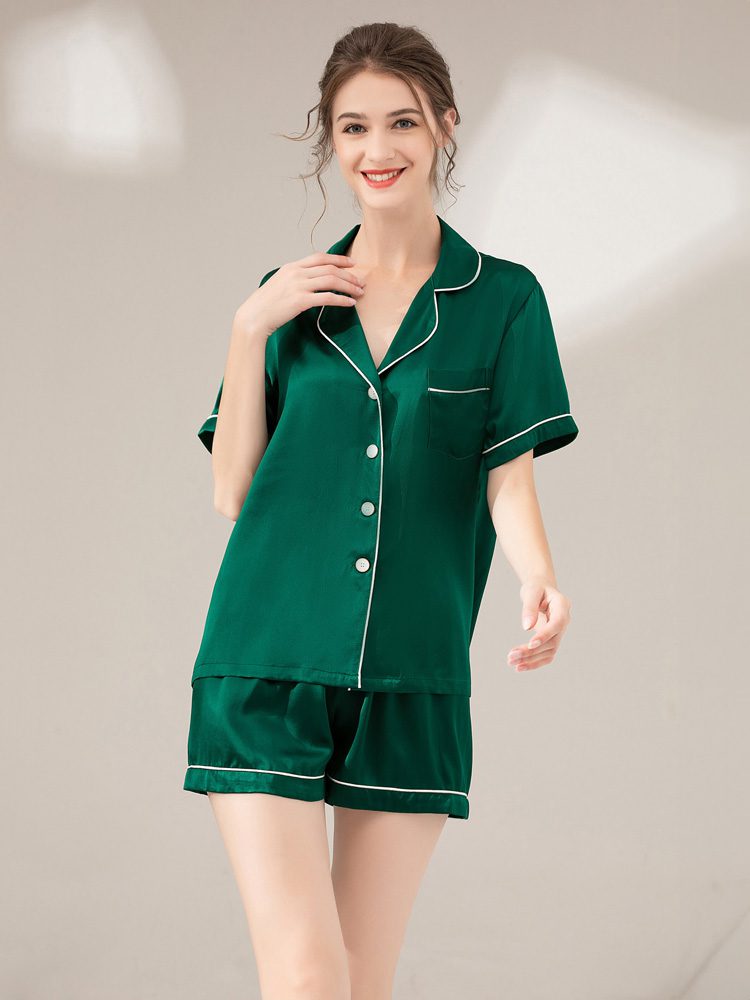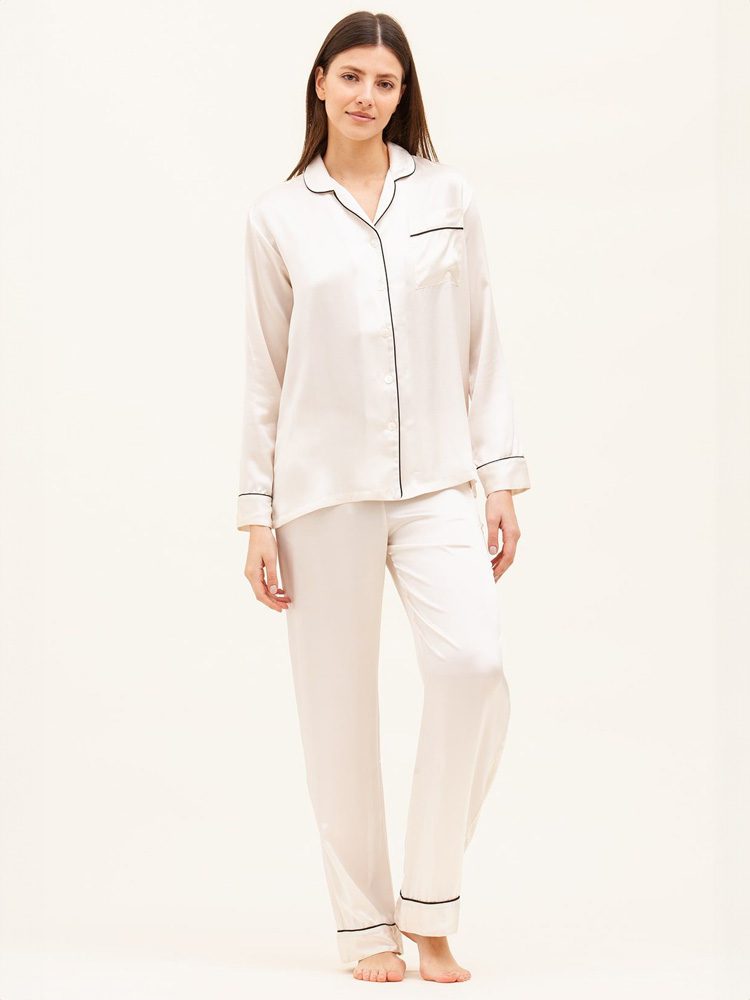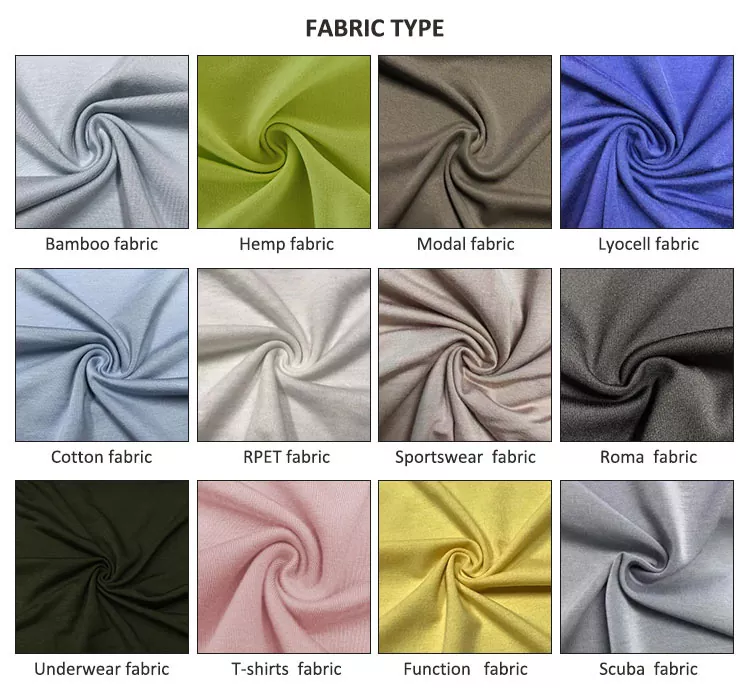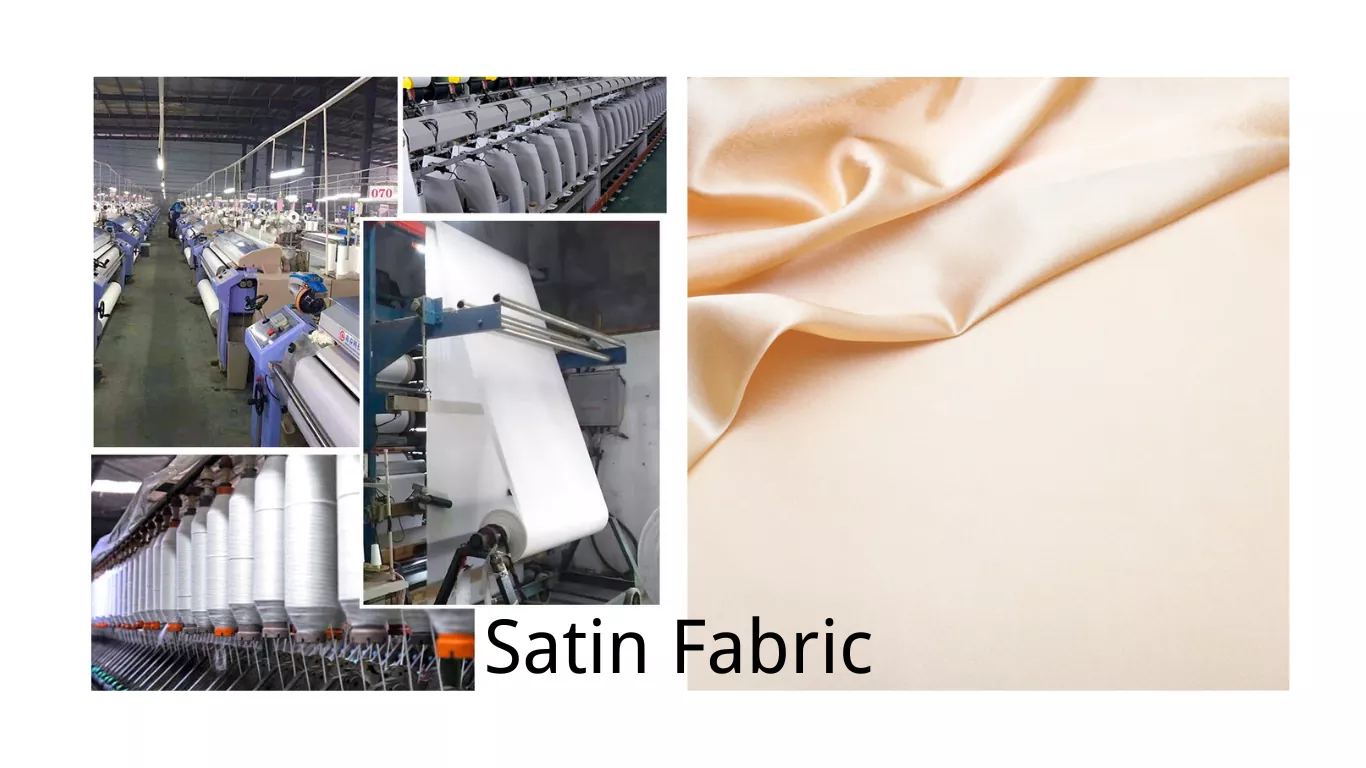ファクトリー・クロージング:大量生産ファッションの力と多様性
The apparel industry has radically transformed over the past couple of centuries, courtesy of the mass production process – a paradigm shift brought on by the Industrial Revolution. This system of manufacturing, typically characterized by the assembly line method, involves streamlined procedures facilitating the production of high volumes of garments. It leverages specialized labour, mechanized operations and standardized designs to ensure efficiency, lower costs and catapult scalability.
Conventionally, the process starts with ideation and sketching, proceeding to pattern making, cutting, sewing, pressing and packaging. Henceforth, these steps are replicated on a large scale, resulting in hundreds, if not thousands, of identical pieces. The prosperity and global dominance of multiple fashion brands today can be attributed to this phenomenon of mass production in the apparel industry. It remarkably abridged the gulf between high fashion and everyday wear, bringing tasteful clothing within the reach of the average consumer.
The Evolution and Progression of Industrialized Garment Manufacturing
Industrialized garment manufacturing traces its roots to the dawn of the industrial revolution in the late 18th century. At this juncture, the invention of the spinning jenny and the power loom sparked a major shift in the industry from small-scale, handcrafted production to mass industrial production. Advancements in steam and water power further accelerated this trend, pushing the fashion industry into an era of unprecedented expansion. These pioneering manufacturing methods served as the bedrock upon which our modern global fashion industry is built.
In the 20th century, the development of more sophisticated machinery and production techniques brought another monumental change. With the advent of assembly line production, manufacturers were able to partition tasks, increasing efficiency, speeding up the rate of production, and substantially reducing costs. The ubiquity of synthetic fibers in the mid-century further widened the scale and scope of mass production. Technological advancements, particularly in automation, computerization, and digitalization, continue to shape the modern landscape of the industry, underpinning its constant evolution and progression.
Unveiling the Power of Mass-Produced Fashion in Modern Society

Mass production in the fashion industry characterizes the prevailing narrative in today’s consumer landscape. With the capacity to produce a vast range of products on a grand scale, the process has completely revolutionized the fashion sector. Economies of scale realized from large-scale production have made fashionable clothing affordable and accessible, enabling consumers with varying budget constraints to participate in the fashion discourse. Conversely, limited edition collections and high-end fashion are no longer the predominant force shaping consumer choices, as mass-produced fashion breaks the elitist barriers in the world of style.
The democratization of fashion is another powerful outcome facilitated by mass production. The paradigm shift facilitated by manufacturers routinely churning out large quantities of apparel has narrowed the gap between high-end fashion and mainstream clothing. Mass production technology has made it feasible to mimic runway trends and sell them at affordable price points – taking fashion from the exclusive domain of a niche, wealthy clientele to a wider, mass-market audience. As a result, fashion trends are more influenced than ever by mass consumer demand, truly embodying the essence of democratic expression.
The Role of Technology in Streamlining Apparel Production
The apparel industry is one that has greatly benefited from the advancements in technology. From computer-aided designing software to sophisticated production machinery, technological innovations have added an unprecedented level of fluidity and flexibility to 衣料品製造工程. Such innovations are not only instrumental in improving the efficiency and scalability of operations but also in significantly reducing manual labor and associated costs.
Further, the adoption of technology has driven superior quality control and precision in apparel production. Traditional manufacturing techniques are being replaced by innovative technologies such as 3D printing and laser cutting, bringing a new level of precision and consistency to the finished products. These advancements have provided アパレルメーカー with a competitive edge, allowing them to quickly respond to market trends and consumer demands while maintaining high-quality standards.
Analyzing the Economics of Mass-Produced Fashion
The economics of mass-produced fashion hinges heavily on the principles of supply and demand, and economies of scale. Utilizing advanced manufacturing techniques and technologies, アパレルメーカー are able to produce large quantities of identical products, significantly reducing the per-unit cost of production. This effectiveness in large-scale manufacturing ensures the affordability of fashion items for the masses, promoting consumer consumption and fueling the retail sector.
In recent years, the fast-fashion trend has further intensified the economic dynamics of mass-produced fashion. Fast fashion relies heavily on quick turnaround times and low production costs to imitate catwalk trends at affordable price points. However, this sped-up production cycle often comes at the expense of ethical labor practices and environmental sustainability, calling into question the true cost of cheap, mass-produced fashion. Clearly, the economics of mass-produced fashion involves more than monetary matters; it also entails a complex web of ethical, social, and environmental impacts.
The Impact of Industrialized Apparel Production on Market Trends

Industrialized apparel production significantly shapes market trends, acting as both a response to and a driver of changes in consumption trends. The production process in the apparel industry has shifted from traditional manufacturing systems to advanced automated ones, facilitating vast production volumes. As a result, trends in the industry can emerge, evolve, and dissolve faster than ever, creating an environment of ‘fast fashion.’ This phenomenon has given birth to an ever-changing fashion landscape wherein consumers expect, and the market delivers, a continuous flow of new fashion styles.
The ability to produce vast quantities of apparel has directly influenced pricing strategies, resulting in increasingly affordable fashion items. Influenced by the availability of inexpensive apparel, consumer expectations have adjusted accordingly, further driving the trend towards lower clothing prices. On the industrial side, with advancements in technology and increased production capacity, companies are equipped to better predict, plan and respond to these market trends. Thus, industrialized apparel production creates a cyclical relationship with market trends, significantly impacting the overall dynamics of the fashion industry.
The Versatility of Mass-Produced Fashion: A Closer Look
At the intersection of creative design and high-tech machinery lies the concept of mass-produced fashion. It provides a versatile platform for designers and manufacturers to offer a vast array of styles and trends to consumers on a global scale. With the aid of cutting-edge technology, materials, and processes, mass production in fashion goes beyond the mere duplication of a specific design. It allows for variations in sizes, colors, and patterns, all produced in large volumes. This versatility marks the heart of mass-produced fashion, enabling the apparel industry to cater to diverse, widespread customer bases.
On a more significant note, the versatility of mass-produced fashion plays a pivotal role in the world’s foremost fashion hubs, from Paris and Milan to New York and Tokyo. These fashion capitals heavily rely on the industrialized garment manufacturing technique for not only their ready-to-wear collections but haute couture pieces as well. They utilize the process to effectively experiment with innovative designs and materials while adhering to the unforgiving timelines of the fashion industry. Regardless of the changing trends, evolving consumer tastes, and rapid demand fluctuation, the flexibility of mass-produced fashion holds the key to dynamic, fast-paced fashion cycles.
Sustainability Concerns in the Realm of Mass-Produced Fashion
The advent of mass-produced fashion, while boasting benefits such as speed, efficiency, and economy of scale, has unfurled a wave of sustainability concerns that the industry can no longer afford to overlook. These concerns encompass a vast array of environmental issues, including excessive water consumption, use of harmful chemicals, and production of significant waste, all aspects inherent to fast, large-scale apparel manufacturing. Furthermore, the global demand for mass-produced clothing exacerbates these issues, as the intensified rate of production and consumption spirals into a ticking ecological time bomb.
On the other hand, emerging dialogue and action in sustainable fashion denote a growing consciousness and commitment towards mitigating these adverse impacts. Brands are re-evaluating their production methods, exploring circular business models and investing in renewable resources and ethical labor practices. A trend towards transparency is manifesting, helping businesses share their sustainability journey, gain consumer trust, and drive a new wave of responsible mass production. Despite these growing efforts, the scale of the challenge remains immense, demanding accelerated action and dynamic transformation throughout the entire fashion industry.
Addressing the Quality vs Quantity Debate in Apparel Manufacturing

The discourse surrounding quality versus quantity remains a pertinent issue in the apparel manufacturing industry. Businesses are often confronted with the task of reconciling these two aspects to ensure stability and continuity. On one hand, quality is essential as it directly influences consumer satisfaction, establishes brand reputation, and promotes customer loyalty. On the other hand, quantity is imperative to meet high demand, survive intense competition, and garner considerable revenues.
Modern アパレルメーカー have deployed various strategies and measures to create a balance. Continuous quality improvements (CQI) has been widely employed, an approach aimed at reducing errors and enhancing customer satisfaction by constantly evaluating and improving processes. Correspondingly, advanced technologies such as Computer-Aided Design (CAD) systems, automated cutting and sewing machines, and high-speed production lines have been introduced to boost overall manufacturing output and efficiency.
Case Studies: Successful Brands Thriving on Mass-Produced Fashion
Zara, the Spanish fast-fashion giant, is a success story that aptly showcases the power and potential of mass-produced fashion. The brand has been immensely successful in implementing an integrated, adaptive business model that can react quickly to the changing trends in the industry. By reducing the time from design to retail to merely three weeks, Zara defies the traditional timelines of apparel manufacturing. Their quick turnaround approach allows them to continuously stock fresh designs in their retail stores, thus keeping customer interest piqued. This speed and agility, fueled by the mass production model, has afforded Zara a unique competitive advantage in the hyper-competitive retail fashion industry.
On the other side of the world, UNIQLO, a Japanese casual wear designer, manufacturer, and retailer, brings a contrasting but equally powerful approach to leveraging the power of mass production. UNIQLO focuses on producing everyday essentials in bulk, creating a vast inventory of standard models that are always in demand. Their strategy is to offer a variety of choices in color and size, rather than style and design. The brand, therefore, doesn’t chase seasonal trends but instead anchors on the consistency of its products, promoting the versatility and functional reliability of its clothing. UNIQLO’s mass production strategy underlines the role of understanding market demand and customer behavior in tailoring an effective mass production approach.
H&M, another global fashion retailer hailing from Sweden, has also effectively utilized the mass production model to its advantage. With a business strategy that combines design, quality and sustainability, H&M has been able to maintain a robust presence in the competitive fast-fashion industry. The brand consistently delivers affordable fashion that is both current and sustainable by focusing on large scale production of trendy clothing items without compromising on their commitment towards sustainable practices. This approach allows them to cater to an extensive customer base while promoting responsible consumption.
• Zara’s success lies in its ability to quickly adapt to changing trends through an integrated business model.
• Their quick turnaround time from design conception to retail – just three weeks – keeps their inventory fresh and customers interested.
• This agility gives Zara a unique edge in the highly competitive retail fashion industry.
UNIQLO takes a different approach by focusing on mass producing everyday essentials rather than chasing seasonal trends.
• They offer variety in terms of color and size instead of style or design.
• UNIQLO emphasizes consistency, versatility, and functional reliability in their products.
• Understanding market demand and consumer behavior plays a crucial role in shaping UNIQLO’s effective mass production strategy.
H&M blends design with quality and sustainability for their successful take on the mass-production model.
• By producing fashionable yet affordable clothing at scale they can reach more customers globally
• Their commitment towards sustainable practices sets them apart from other brands within this sector.
These case studies highlight how diverse strategies can be employed while leveraging the power of mass-produced fashion. Each brand brings forth unique approaches tailored according to their target audience’s preferences demonstrating that there isn’t one ‘right’ way when it comes down to thriving within this dynamic industry.
よくあるご質問
What is meant by mass production in the apparel industry?
Mass production in the apparel industry refers to the process of producing clothing in large quantities using standardized designs and assembly-line techniques. This method helps in meeting the demands of the fast-paced fashion market.
How has industrialized garment manufacturing evolved over time?
Industrialized 衣料品製造 has greatly evolved through advancements in technology, such as automated sewing machines, computer-aided design, and digital printing. It has moved from labor-intensive and time-consuming processes to more efficient and streamlined operations.
How does mass-produced fashion impact modern society?
Mass-produced fashion has a significant impact on modern society. It helps in making fashionable clothing accessible and affordable to a wide range of consumers. It also influences market trends and impacts the global economy.
Can you explain the role of technology in streamlining apparel production?
Technology plays a crucial role in streamlining apparel production. Innovations like CAD systems, automated sewing, and cutting machines, and AI-driven design software have made the production process faster, more precise, and efficient.
What are the economics of mass-produced fashion?
The economics of mass-produced fashion involves scale economies, where the cost of producing each unit decreases as the number of units produced increases. This method allows brands to offer fashionable items at a lower cost, thus attracting a larger market.
How does industrialized apparel production influence market trends?
Industrialized apparel production has a significant influence on market trends. It allows for quick response to fashion trends, thus driving consumer demand. It also encourages fast fashion, where trends are quickly brought from the runway to the consumer at an affordable price.
How versatile is mass-produced fashion?
Mass-produced fashion is highly versatile. It caters to a wide variety of styles, sizes, and preferences, allowing consumers to choose from a broad array of fashionable items.
Are there any sustainability concerns related to mass-produced fashion?
Yes, there are several sustainability concerns connected to mass-produced fashion. These primarily include excessive resource use, environmental pollution from production processes, and the creation of fast fashion, which contributes to a throwaway culture.
How does the quality versus quantity debate play out in apparel manufacturing?
In アパレル製造, there is often a debate between quality and quantity. While mass production allows for the creation of many products at a lower cost, there may be concerns about the durability and quality of these products. However, many brands are now focusing on achieving a balance between the two by implementing quality control measures in their mass production processes.
Can you provide some examples of successful brands thriving on mass-produced fashion?
Brands like Zara, H&M, and Uniqlo are some notable examples of companies that have thrived on mass-produced fashion. These brands have mastered the art of quickly responding to fashion trends and providing fashionable, affordable clothing to a global market.




